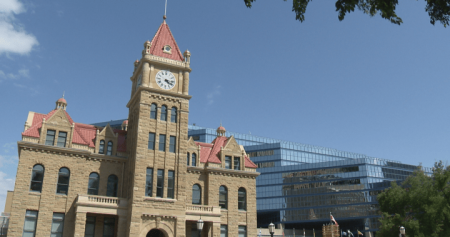Inflation in Canada has reached the coveted two per cent annual rate, with wage hikes outpacing inflation for the past 19 months. This positive economic news has led the Bank of Canada to implement three rate cuts as part of an easing cycle, with Finance Minister Chrystia Freeland celebrating the return of price stability after years of surging prices and pandemic-related disruptions. However, Nathan Janzen, RBC’s assistant chief economist, warns that while the focus on inflation and rate cuts is promising, it may overlook the economic pain looming for Canadians. The softening Canadian economy has led to a decrease in consumer spending and business investment, with overall economic output below trend.
Despite the three rate cuts, the Bank of Canada’s policy rate is still considered to be in a restrictive territory, suppressing the economy. Changes in interest rates typically take between a year to 18 months to fully impact the economy, leading to a continued dampening effect on economic growth. While Freeland acknowledges the easing pressure on the economy, she notes that Canada has not yet reached the neutral rate of interest. The eventual goal of the rate cuts is to stimulate economic growth by reducing borrowing costs for Canadians and businesses. However, the pace and extent of the rate cuts remain uncertain, with differing opinions among economists on how quickly the economy will recover.
James Orlando, director of economics at TD Bank, believes that the policy rate is still significantly above where it needs to be to spur growth. He predicts that it may take until mid-2025 for economic growth to accelerate at the current pace of rate cuts. The majority of homeowners are set to renew their mortgages in the coming year, potentially facing higher rates than in previous years due to the gradual normalization of interest rates. This could be a significant challenge for households as they regain confidence in spending and draw down their savings to stimulate economic growth.
The Bank of Canada’s downward trajectory for interest rates is gaining confidence among economists, but the path forward remains uncertain. The central bank has outlined various scenarios for future rate decisions based on the resilience of the economy and potential risks of a steeper economic slowdown. Some forecasters and market watchers have raised their bets for an accelerated rate cut at the next meeting in October, following the news of two per cent inflation in August. However, the central bank remains cautious in its approach to maintaining price stability and ensuring a soft landing for the economy.
While the return of inflation to the two per cent target is a positive step, Bank of Canada officials are not ready to declare victory just yet. Senior deputy governor Carolyn Rogers emphasized the need for stable price stability and expressed a commitment to ensuring a successful landing for the economy. With the unemployment rate on the rise and persistent economic headwinds, there are concerns about achieving a true soft landing without tipping into a recession. Despite the challenges ahead, economists like Janzen and Orlando remain cautiously optimistic about the future, expecting a gradual improvement in economic conditions by 2025. While there may be a light at the end of the tunnel, Canada’s economy still has a journey ahead before fully recovering.













